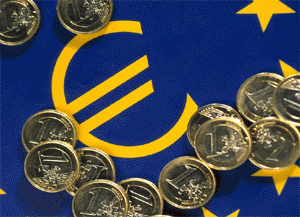
By Mike Jones
The NZD spent most of last week consolidating in a 0.6600-0.6850 range. A tentative stabilisation in the European sovereign debt crisis paved the way for a small recovery in risk appetite last week.
The steady stream of bad news out of Europe slowed to more of a trickle. What’s more, markets have taken heart from attempts by peripheral European counties to reign in their whopping budget deficits.
Indeed, Portugal announced a further €15b of austerity measures last week. Combined with a timely reminder of the global economic recovery underway (the OECD revised up its 2010 global growth forecast to 4.6%), this helped equity markets and commodity prices stabilise.
The S&P500 rose 0.2% over the week and the CRB index (a broad measure of global commodity prices) climbed 1.3%. Our risk appetite index (which has a scale of 0-100%) rose from 32% to 36.6% ¬– albeit still well below the long-run average of 50%.
Reduced pessimism about the global recovery and a modest improvement in risk appetite helped shore up sentiment towards “growth-sensitive” currencies like NZD/USD. In fact, on a trade-weighed basis, the NZD actually pushed higher (led by NZD/EUR) as focus gradually returned to relative economic fundamentals.
The NZ data calendar is very thin over the coming week. The May NBNZ Business Survey may see confidence come off its highs given growing concern about Europe’s plight. NZ’s record high commodity prices will also be in focus, with the results of Fonterra’s latest online auction and the broader ANZ index both released on Wednesday.
All up, we suspect a bit more consolidation is due for NZD/USD this week. Should upcoming data continue to restore optimism about the global recovery, we’d expect further recovery in risk appetite to underpin ‘growth-sensitive’ currencies like the NZD. Still, unless we see blockbuster gains in this week’s commodity price data, we suspect the 0.6950-0.7000 region will cap the topside.
Majors
Most of the major currencies weakened against the USD on Friday. Currency movements were fairly fractious at times reflecting thin liquidity (US and UK markets are closed on Monday) and sporadic bouts of month-end portfolio rebalancing.
A weaker GBP was the main feature of the early part of the night. Not only was May UK consumer confidence data fairly uninspiring (-18 vs. -16 expected), but month-end demand for EUR/GBP kept GBP under pressure. GBP/USD slid from 1.4600 to nearly 1.4450, paving the way for a broad strengthening in the USD.
Ratings agency Fitch cut Spain’s sovereign credit rating from AAA to AA+, stopping Friday’s tentative EUR rally in its tracks. Having climbed to nearly 1.2450, EUR/USD tumbled all the way back below 1.2300.
Adding to the EUR’s woes, the German government announced it will keep its short-selling ban on certain securities in place permanently.
A negative night in global equity markets further crimped investors risk appetite, reinforcing investors’ preference for “safe-haven” currencies like the USD. European stocks were flattish, while the S&P500 fell 1.2% to end the month down 8.2% – the worst monthly performances since February 2009.
Weaker-than-expected US consumer spending did nothing to help the pessimistic mood. Indeed, April’s flat outturn was the first month since September in which consumer spending did not increase.
Looking ahead, we’d expect bearish EUR sentiment to remain in place early in the week. Weekend reports of more stresses in the Spanish banking sector, as well as a UK report suggesting Greece should leave the Eurozone (which would ultimately be EUR positive) should ensure rallies are limited to the 1.2400 region in the short-term. Despite public holidays in the US and UK tonight, there is plenty of event risk to keep an eye on this week.
A slew of global data is due, with US non-farm payrolls for May likely to attract the most attention. The market is looking for over 500,000 jobs to be added, which would mark the largest increase since September 1997.
Central bank policy announcements from the RBA (on-hold expected) and the Bank of Canada (25bps hike expected) will provide a useful update on officials’ take on the European debt crisis. The G20 is also due to meet late in the week, with currencies expected to be on the agenda.
Despite all that, we can’t help but think equity market sentiment and gyrations in risk appetite will again provide most of the direction for currencies this week. Keep close watch on money market spreads (e.g. US Libor-OIS) for a key guide on contagion risks from the European crisis.
* Mike Jones is a currency strategist for BNZ and further research from the BNZ's team of economists is available here.
No chart with that title exists.

We welcome your comments below. If you are not already registered, please register to comment.
Remember we welcome robust, respectful and insightful debate. We don't welcome abusive or defamatory comments and will de-register those repeatedly making such comments. Our current comment policy is here.